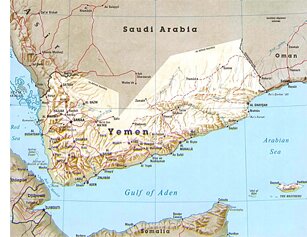 |
||
|
|
DOT-COM HOME https://dot-com-alliance.org/index.htm
Contact Us https://dot-com-alliance.org/contact.htm |
|
|||
|
|||
|
The Yemeni High School Internet Pilot Project Project Goals The Yemeni High School Internet Project is a three-year initiative funded by the Middle East Partnership Initiative, through USAIDs dot-EDU project. The goals of the project were to:
 Increased Access for Girls Increased Access for GirlsThe project goals also support the ministrys general push to improve the countrys abysmal statistics on girls education and literacy. Indeed, Yemens enrollment and retention rates, especially for girls, are extremely low: only 33% of girls finish primary school; only 45% of rural girls are enrolled in public schools. The illiteracy rate stands at 76% for females in Yemen. Indeed, as part of the project, a Yemeni NGO, called SOUL (the Society for Women and Children in Yemen) conducted a study on barriers to girls use of computers and the internet to help inform project implementation. The strongest barriers cited were:
Selecting Schools and Master Trainers The project was designed to serve 5 schools in Sanaa, 5 in Aden, 3 in Al Mukalla and 4 in Taiz. Schools went through an application process in order to be selected to participate in the project. The schools had to demonstrate the following:
The Initial work of the project was done by Amideast. This phase of work involved installing computer laboratories, with internet connectivity, in the selected Yemeni High schools in Sanaa and Aden. The second phase of the project involved a training of trainers model to build school level capacity in the use of computers and the internet. EDC selected 5 teachers from each school through a competitive application process involving project staff and ministry officials, to become master trainers in their respective schools. EDC provided training to these teachers from each school, as well as the school director, in basic principles and practices of student centered instruction (as a context for computer and internet-based instruction in the classroom). Hence, the subsequent ICT training offered by project partners World Links Arab Region and iEARN was firmly grounded in notions of transforming classroom practice and improving teaching and learning and not simply in the technology itself. The project worked according to the following principles:
The project is currently working with five high schools in Sanaa and five high schools in Aden. In the 2005/2006 academic year, the project will work with an additional four high schools in Taiz and three in Al Mukalla. Results and Lessons to Date The model of tying master trainer status to an open and transparent application process proved very popular with both the ministry and the schools. Other key decisions made by the project to ensure success included training the school directors in the same materials as the master teachers and in having a cadre of master trainers (5 plus the school director) per school so that responsibility for the lab and the professional development of colleagues could be shared and was not unduly burdensome to one or two people. In terms of numbers, the project has trained 54 master trainers from 10 schools (26 in Sanaa, [18 female, 8 male], and 28 in Aden, [13 female, 12 male]) in principles and practices of student centered instruction, in how to use computers and in how to use the internet as an educational resource. In Sanaa, the 26 Master Trainers have trained:
In Aden, 25 Master Trainers have trained 246 teachers (153 female) on the same topics. These teachers have also begun to use student centered methodologies in their classrooms and participate in online collaborative lessons. By the middle of the second semester, they too are expected to begin using the labs for student instruction. The project expects to launch the trainings in Al Mukalla and Taiz in the coming months, once the labs are installed and ready for use. More than 2/3 of the teachers trained reported that they had no experience with computers and the internet; none of the teachers had previous experience in online courses. In addition, teachers in Sanaa have reported that students are enthusiastic about learning to use computers and the internet and demonstrate more interest in those subjects for which they can use the labs. Finally, schools in Sanaa, which received their computer labs first (before Aden and Al-Mukalla and Taiz) opened the labs to community members during the summer break. Master trainers and teachers offered computer courses to members of community, especially women and girls who had dropped out of school for various reasons. This unanticipated but highly welcome initiative on the part of Sanaa school directors expanded the reach of the labs and increased the cost effectiveness of MEPIs initial investment. The sound model for site selection and master teacher selection contributed to the schools commitment to utilize the labs for learning purposes and thus effectively provide ICT access to those for whom it was not possible in the past. |
||||
|

|
|||||||||||